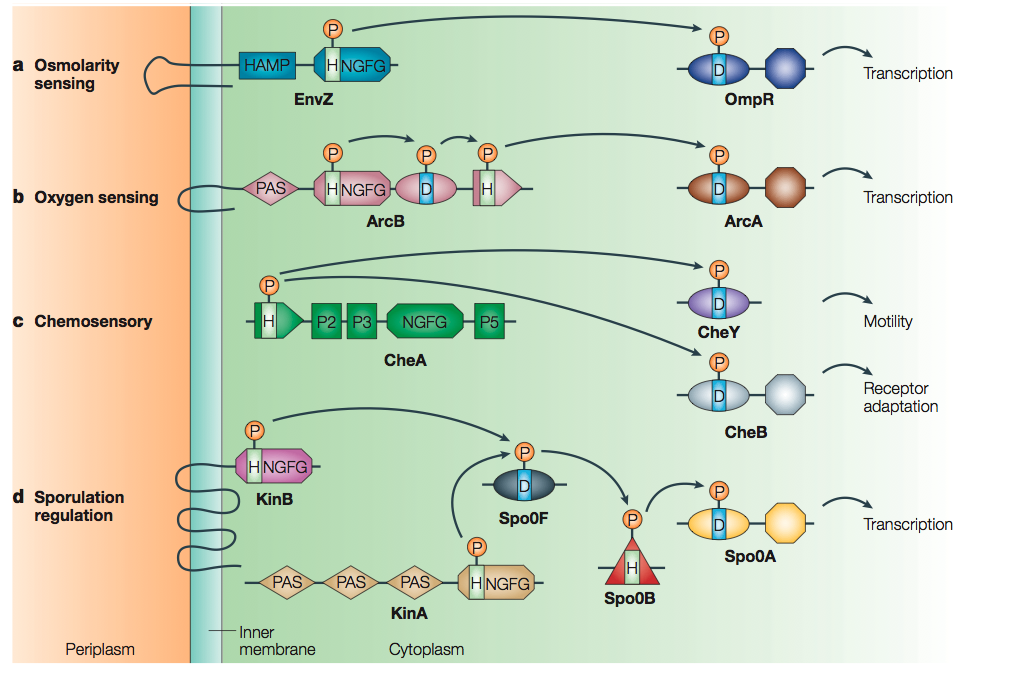Team:ULB-Brussels/Bacterial Chemotaxis
From 2009.igem.org
In order to respond to changing environment, bacteria developed sensory systems. One way to respond may be to move. And that’s achieved by the action of small phosphorylated molcules binding to the flagellar rotor. There are many different sensory pathways in eukaryotes as well as in prokaryotes. Prokaryotes commonly use a histidine-aspartate phosphorelay (HAP) system consisting of a histidine protein kinase (HPK) and a response regulator (RR). The environmental signals can be concentrations of nutrients or toxis, oxygen levels, pH, osmolarity, light,...
The HAP systems works as follows : the HPK (e .g. in Escherichia coli, CheA interacting with transmembrane receptors) is trans-autophosphorylated on a His residue. The phosphoryl group is then transferred to an Asp residue situated on a RR that becomes therefore activated and able to respond to the signal. In the chemosensory pathway of E. coli, there are two RRs competing for the phosphoryl group : CheY and CheB. The first one controls flagellar motor switching : by binding to the flagellar motor, it causes the switch to clockwise rotation, the cell tumbles and swims off in a new direction. The second one is a methylesterase that controls the adaptation of the methyl-accepting chemotaxis proteins or chemoreceptors (MCPs). [1]
E. coli possesses at least four MCPs : Trg for ribose and galactose ; Tar for aspartate ; Tsr for serine ; Tap for peptides. A fifth one may be a redox detector. [2]
In absence of gradients of chemoattractants, the cells walk randomly. They evaluate the changes in concentrations by comparing the number of bound receptors over the past 1 s with the number during the past 3 s. When this number increases they are expected to rotate counterclockwise and therefore be propelled forward. When they move away from the cells cluster, they tumble in order to come back. The tumble rate and the clusters boundaries are thus determinated by the sensory memory of cells.[3]
[1] George H. Wadhams and Judith P. Armitage 2004. Making sense of it all : bacterial chemotaxis. Nature Reviews, Volume 5, 1024-1037.
[2] Thorsten W. Grebe and Jeff Stock 1998. Bacterial chemotaxis : The five sensors of a bacterium. Current Biology, 8 :R154-R157.
[3] Nikhil Mittal, Elena O. Budrene, Michael P. Brenner, and Alexander van Oudenaarden 2003. Motility of Escherichia coli cells in clustters formed by chemotactic aggregation. PNAS, vol. 100, 13259-13263.
 "
"
